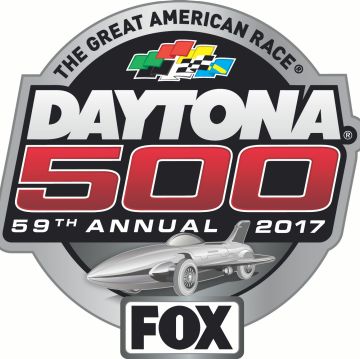Daytona 500: New Track, Same Big Sound
Venue focus is on live sound; Fox Sports’ broadcast audio builds on decades of experience
Story Highlights
The second Daytona 500 in the renovated Daytona Motor Speedway, rechristened Daytona Rising after last year’s $400 million reimagining of NASCAR’s flagship venue, will take place Sunday (Feb. 26, Fox Sports). Most of the new sound elements in the rebuilt track center on its live sound. Broadcast audio for the 59th running of the Daytona 500, on the other hand, is the outcome of more than a decade’s worth of constant tweaking by Fox Sports, which covering the race for the \17th consecutive season.
 The in-venue sound relies on 2,791 loudspeakers covering the huge back of house, as well as 295 Community Sound R.5 and R.2 series speakers facing the track from atop the nearly mile-long grandstand. More than 100 miles of Cat 6 and single-mode fiber were installed to connect all of those transducers.
The in-venue sound relies on 2,791 loudspeakers covering the huge back of house, as well as 295 Community Sound R.5 and R.2 series speakers facing the track from atop the nearly mile-long grandstand. More than 100 miles of Cat 6 and single-mode fiber were installed to connect all of those transducers.
For the broadcast audio, the goal is to build the race in layers, with a foundation made of some of the most challenging sound heard on broadcast sports, part of Fox’s approximately 100 hours of multiplatform programming.
Starting with qualifying runs earlier in the week and the Can-Am Duel at Daytona on Thursday, A1 Kevin McCloskey is in his third season helming the broadcast sound, with Chip Weaver handling the effects submix. Both are working from Game Creek’s Fox trucks.
Effects sound is gathered from more than 150 microphones placed along the track and throughout the venue. Much of those effects will also be heard on “Crank It Up,” an SFX “drum solo” that Fox inserts at some point during the race, made up of a live mix directly from Weaver’s Calrec Artemis submix console sent through McCloskey’s main mix.
In-Car Audio
In addition, some of the in-car audio will come through a special audio-editing unit created solely for driver-to-crew-chief communication to play back live interaction. Radio Editor Jeff Bratta is using a dual editing system with two Mac Minis and PreSonus Studio One 3 edit software, using an RME MADIface interface to convert audio to USB for the computers.
In-car audio from all 43 cars and their pit crews is collected by Racing Radios on the field. That’s transported to the radio-broadcast studio in the Game Creek trucks, where radio A1 Mark Williams operates the live console over a fiber cable. Much of the obvious audio, such as a driver emerging from a wreck to confirm that he or she is OK, will go out live on a 1.5-second delay. However, Bratta will also be monitoring the same feed but listening for deeper narratives.
“I might hear a problem developing over the course of 10 or 20 laps,” he explains. “Once it’s clear what’s going on, I can [edit] that down to 20 seconds and ‘sell’ it up the chain to production.” Literally, do an elevator pitch on why this particular piece of the race will be compelling to fans to the executive producer, who can then recommend it to the producer. All this, including the actual editing, will take place in a matter of minutes, with Bratta hitting “play” and providing the audio directly into the broadcast if the mini-package gets a green light.
“It allows the editor not to miss any content while making a clip and playing back with the dual edit system,” McCloskey explains. “He’s looking for the little idiosyncrasies that fill out the picture for viewers.” Even a five-minute lag could render a clip “old news” in a race like this, he adds. It’s also the closest viewers can get to hearing what transpires during pit stops, where the ambient noise level would make microphones useless.
Each Track Has Its Own Sound
As beautiful as Daytona Rising looks, it’s a tough track to manage aurally. McCloskey says that each NASCAR track has its own distinctive sound, created in large part by the number and location of the grandstands. For example, the Bristol Motor Speedway, with its fan seating completely enclosing the track, comes the closest to what A1s encounter in true stadiums.
Daytona, touted by NASCAR as the sport’s first “stadium,” is closer to what stock-car–track designs have always been: stands along the straightaways and completely open around the turns. McCloskey says that, at times, he misses having something there to reflect the sound in those crucial areas of a race, where shifting can create a lot of different tones. On the other hand, he says, “Daytona can let the sound breathe more.”
Stay tuned to SportsVideo.org throughout the weekend for SVG’s live coverage from the Daytona 500.
